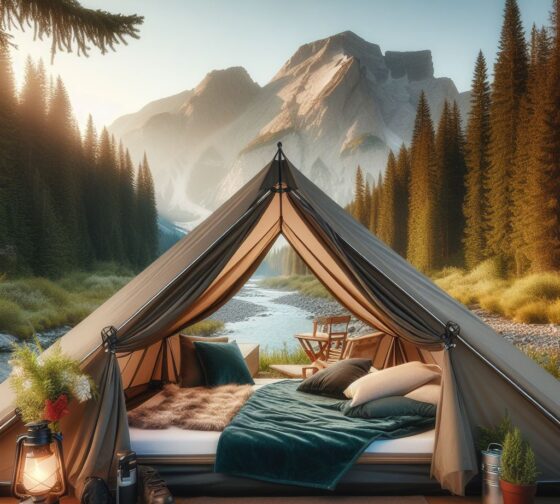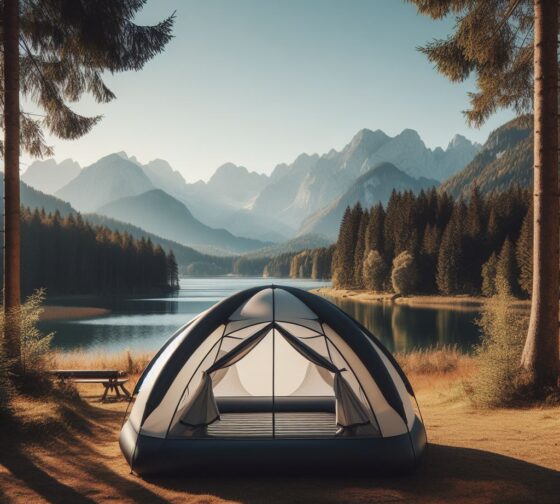Types of Camping Tents: Your Comprehensive Guide
*We may earn a commission for purchases made using our links. Please see our disclosure to learn more.
Exploring the Diversity: Types of Camping Tents for Every Adventure
Camping enthusiasts know the significance of a good tent; it’s not merely a shelter but the very essence of comfort and security during outdoor expeditions. As someone deeply passionate about camping and tents, I’m excited to delve into the diverse world of types of camping tents. Let’s explore the vast array of tent options available and understand how each serves a unique purpose in the realm of camping.
The beauty of camping lies in the blend of nature and comfort, and a camping tent becomes your refuge, your home away from home. Understanding the different types of camping tents ensures that your choice aligns perfectly with the demands of your adventure. From traditional A-frame tents to innovative hammock tents, each option offers distinct advantages and experiences.
Factors to Consider Before Choosing a Tent
Before diving into the specifics of tent types, it’s crucial to comprehend several essential factors. Capacity, seasonality, weight, and durability significantly impact your camping tent selection. Additionally, the terrain, climate, and surroundings of your camping destination play a pivotal role in determining the most suitable tent for your needs.
Traditional A-frame Tents

A-frame tents, with their iconic triangular shape, present simplicity and ease of setup. These tents are perfect for fair weather conditions, providing adequate space for a small group. However, their design might not withstand extreme weather, making them less suitable for challenging environments where sturdier options excel.
Dome Tents: Versatile and Popular Choice

Dome tents, characterized by their arched structure, stand out as one of the most versatile and widely used camping tents. Their streamlined design ensures stability and durability, making them adaptable to various terrains and weather conditions. Setting up a dome tent is usually straightforward, making it an excellent choice for both beginners and seasoned campers.
Tunnel Tents: Ideal for Family Camping
Tunnel tents, boasting a tube-like structure, offer generous space and comfort, making them an excellent choice for family camping trips. Their roomy interiors accommodate separate sleeping areas, ensuring privacy within the tent. These tents shine in moderate weather conditions, appealing to campers seeking comfort and ample space for their families.
Types of Camping Tents – Cabin Tents: Comfort and Space
Cabin tents, resembling a small cabin, prioritize comfort and spaciousness. With near-vertical walls, they optimize internal space, allowing campers to move freely inside. Cabin tents are ideal for car camping and extended stays, creating a homely atmosphere amidst the wilderness.
Geodesic Tents: Stability in Extreme Conditions
Geodesic tents boast a complex, interconnected pole structure, offering exceptional stability, particularly in harsh weather conditions. These tents are favored by adventurers seeking to conquer challenging terrains and unpredictable climates. Their robust construction makes them a reliable choice for mountaineering and expeditions where durability is paramount.
Pop-up Tents: Quick and Easy Setup
Pop-up tents, designed for swift assembly, are perfect for spontaneous camping trips or festival stays. While convenient, these tents may compromise on durability and weather resistance. They serve best for casual camping in fair weather conditions where rapid setup is essential.
Hammock Tents: Innovative and Lightweight
Hammock tents provide a unique camping experience, suspending campers above the ground for restful sleep. Lightweight and compact, they appeal to backpackers and minimalist campers due to their portability. They excel in forested or rocky terrains where traditional tents encounter challenges.
Inflatable Tents: Quick Inflation, Easy Setup

Inflatable tents gained popularity for their rapid inflation and effortless setup. However, their reliance on air beams makes them vulnerable to punctures. They suit campers seeking quick assembly and minimal effort in fair weather conditions.
Teepee Tents: Historical and Stylish
Teepee tents, inspired by Native American dwellings, offer a unique camping experience steeped in cultural significance. While aesthetically pleasing, these tents may lack space and comfort compared to other types. Teepee tents are ideal for mild weather conditions, attracting campers drawn to their stylish design.
My Personal Recommendations for Types of Camping Tents
Based on my experiences, dome tents stand out for their versatility and reliability in various conditions. However, for family camping trips, tunnel or cabin tents offer spaciousness and comfort, ensuring an enjoyable experience for all.
Here are my top 5 camping tent brands renowned for their quality, durability, and innovation in the market:
- MSR (Mountain Safety Research): Known for their high-performance tents suitable for various outdoor adventures, MSR offers a range of reliable and durable camping tents designed to withstand harsh conditions.
- Big Agnes: Renowned for their lightweight yet sturdy tents, Big Agnes excels in producing innovative designs, catering to backpackers and campers seeking a balance between comfort and portability.
- REI Co-op: REI Co-op manufactures a wide range of camping tents, catering to different camping styles and needs. Their tents are popular for their durability, value, and features suitable for various outdoor environments.
- The North Face: Recognized for producing quality outdoor gear, The North Face offers tents known for their durability and performance. They provide a range of tents suitable for different terrains and weather conditions.
- Coleman: Widely accessible and popular among casual campers, Coleman manufactures affordable and reliable tents suitable for family camping trips and recreational outdoor activities. They offer a variety of tent sizes and styles to accommodate different needs.
Please note that the camping gear market is dynamic, and new brands or changes in product quality might have occurred since my last update.
Conclusion
Exploring the myriad options of camping tents reveals a world of diversity, each tent type possessing its own distinct features and suitability for various outdoor scenarios. By gaining a deeper understanding of these tent varieties, campers can confidently select the most fitting shelter for their adventures.
Remember, the perfect tent choice hinges upon a careful consideration of personal preferences, camping needs, and the environment. With the right tent accompanying you on your outdoor journey, rest assured your camping experience will be enriched with comfort, security, and cherished memories amidst nature’s embrace.
FAQs about Types of Camping Tents
- How do I choose the right camping tent?
- Consider the tent capacity, seasonality, weight, durability, and the camping location’s conditions.
- Are inflatable tents suitable for extended trips?
- Inflatable tents can work for shorter trips, but their durability might be a concern for extended use.
- Which tent is best for extreme weather conditions?
- Geodesic tents are designed for stability in harsh weather and are recommended for extreme conditions.
- Can hammock tents accommodate two people comfortably?
- Some hammock tents can accommodate two people, but space might be limited compared to traditional tents.
- Are teepee tents convenient for backpacking trips?
- Teepee tents can be used for backpacking, but their size and shape might not suit all backpackers’ preferences for portability.




